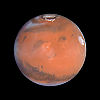Mars
| “ | In time, [a Martian] colony would grow to the point of being self-sustaining. When this stage was reached, humanity would have a precious insurance policy against catastrophe at home. During the next millennium there is a significant chance that civilization on Earth will be destroyed by an asteroid, a killer plague or a global war. A Martian colony could keep the flame of civilization and culture alive until Earth could be reverse-colonized from Mars. | ” |
| —Paul Davies, The New York Times, 2004 | ||
| Mars | |
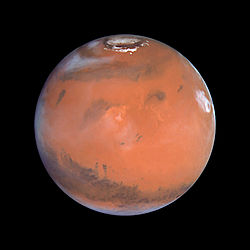 | |
| Planetary characteristics | |
|---|---|
| Orbit | 227,940,000 km from primary (mean) |
| Diameter | 6,794.4 km (equatorial) |
| Surface Gravity | 0.33G |
| Year | 686.98 days |
| Day | 24.62 hours |
| Mean Temperature | 210°K (-63°C) |
| Atmosphere | .010 atm (CO2 95%, N2 3%, Ar 2%) |
| Water/Ice Index | 0% |
| Population (2013) | 250,000 |
| Political Affiliation | Fenspace Convention |
| Government | Direct Democracy |
| Capital | Port Lowell |
Since our first close-up picture of Mars in 1965, spacecraft voyages to the Red Planet have revealed a world strangely familiar, yet different enough to challenge our perceptions of what makes a planet work. Every time we feel close to understanding Mars, new discoveries send us straight back to the drawing board to revise existing theories.
You'd think Mars would be easier to understand. Like Earth, Mars has polar ice caps and clouds in its atmosphere, seasonal weather patterns, volcanoes, canyons and other recognizable features. However, conditions on Mars vary wildly from what we know on our own planet.
Over the past three decades, spacecraft have shown us that Mars is rocky, cold, and sterile beneath its hazy, pink sky. We've discovered that today's Martian wasteland hints at a formerly volatile world where volcanoes once raged, meteors plowed deep craters, and flash floods rushed over the land. And Mars continues to throw out new enticements with each landing or orbital pass made by our spacecraft.
(Text courtesy NASA's Mars Exploration Program homepage.)
History
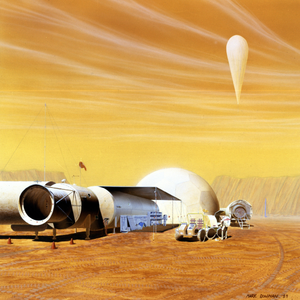
Places of Interest
As the most thoroughly explored place in Fenspace pre-wave, Mars has a number of native features that attract interest as well as the settled areas. Most people are familiar with the four giant volcanoes of the Tharsis Mountains and the rift valley of Valles Marineris. Also of interest is the Cydonia region, home of the Gearhead faction base Marsbase Sara and the infamous Face on Mars.
Fen settlements are scattered all over the planet. The largest settlement on Mars is the Utopia Planitia Shipyard facility in Utopia Planitia, not far from the Viking 2 landing site. The shipyard was designed to be permanent, despite the fact that the terraforming project intends for Utopia to be underwater once the underground aquifers melt. How the Trekkies intend to deal with this problem is as yet unknown.
Airy-0 Crater is host to the second-largest city on Mars, the unaligned town of Port Lowell. Port Lowell is the largest fendane settlement outside of Earth cislunar orbit, populated mainly by members and supporters of the Mars Society who began migrating to Mars early, almost beating the Trekkies to the surface. Port Lowell is the center for "Martian unification," endlessly pestering the other settlements on uniting as a faction above and beyond their political origins. The city is also considered a major spiritual center in Fenspace, as it hosts St. Liebowitz's Cathedral.
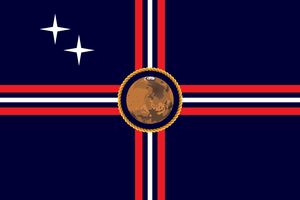
One of the slightly strange towns of Mars is Guestton, founded almost exclusively by people from the UK. This serves the nearby Spacefleet HQ, which appears to by run by Dan Dare Fen, the British space pilot of the 1950s. Guestton is a mining and engineering town, that tries to give the impression of being in a futuristic (alt-1990s) old-fashioned England. Tourist cafes sell high tea (tea and cream cakes, or scones), there are pleasant parks, with lawns and trees, to walk in, and on the right days you can find English open-air markets (mostly selling fruit and vegetables). It might be summed-up as being a 'nice place to live'.
Located on the western end of Valles Marineris, Noctis Labyrinthus is a complex series of deeply incised canyons, forming a complicated and broken labyrinth of rock. Widely regarded as one of the more beautiful parts of Mars, Noctis is especially spectacular in the morning when the low sun shines down the length of the canyons and the green carbon dioxide frost begins to sublimate into a white mist that hugs the valley floor. Once the terraforming project is completed, Noctis will likely be above the snowline, with meltwater rivers running in the valley troughs. Noctis Labyrinthus is home to the Panzer Kunst Gruppe at Grunthal, the Adeptus Mechanicus research temple of Syrinx and a small Imperial Guard garrison at Nosuinus.
Located at the edge of the eastern edge of Candor Chasma, Mars Vegas grew from a pipe dream of a few Las Vegas Fen into a Fenspace Mirror of Las Vegas since it foundation in 2012.
Southeast of Valles Marineris in Argyre Planitia is the Warsie outpost of Mos Eisley. Mos Eisley exists mostly as a way for the Republic to keep an official presence on Mars. However, the town does provide a good stop-off point for scientists working in the southern hemisphere, terraformers and other Martian nomads.
The Pulper city of Helium is located on the northern rim of Hellas Planitia. Helium is the most cosmopolitan of the Martian cities, partly because there aren't enough Pulpers to fill an entire city and partly because the Barsoomian subfaction pulled out all the stops in creating the ultimate fantasy Martian experience. Helium is a city composed of soaring towers and inhabited by fen who live the crystals-and-togas lifestyle.
The enigmatic Castle Heterodyne, home base for a Pulper splinter group known as the Foglios, exists in an undisclosed location somewhere in the southern hemisphere. Most people figure the castle is located in the highlands around Hellas Planitia. Others contend that Castle Heterodyne lurks near the polar ice cap. A handful of conspiracy theorists have suggested that the castle is mobile, moving randomly from point to point across the surface.
Construction on the Grand Canal project, a plan to run an aqueduct from Helium to Isidis Planitia (south of Utopia Planitia, and eventually part of the same ocean), can be seen in the highlands between the two sites. Whether or not Mars will have sufficient water to fill the canal as planned remains to be seen.
Mars Orbit
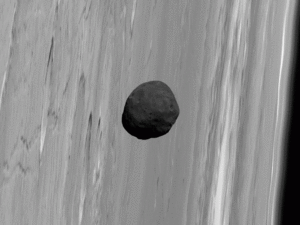
While nowhere near as crowded as Earth orbit, there are still many places to visit or live in the near skies of Mars.
Phobos and Deimos are the planet's natural satellites. Phobos has been turned into Port Phobos, the major port in Martian space, while Deimos is home of the Mars Terraforming Project, the Banzai Institute's Roadhouse base, and the Clark Savage, Jr. Memorial Stadium and Music Complex, Fenspace's finest live-music venue
Starbase 1 holds the distinction of being the first habitat built by the Fen. It serves as the Trekkies' main off-planet base.
Odyssey is the first station purpose-built as a hotel and recreational complex outside of cislunar space. It is smaller than its sister station Stellvia, but built on the same design.
Gallery
A Mars Terraforming Project crewmember conducting weather observations on the surface of Mars, June 2011.
Early-morning rock-climbing in Noctis Labyrinthus.
A team from Port Lowell using surplus NASA equipment on a long-duration survey of Airy-0 Crater.
| |||||||||||||||||||||||





